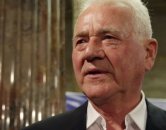Source Feed: Walrus
Author: Wesley Wark
Publication Date: June 23, 2025 - 06:29
Why the US Struck Iran—and What Comes Next
June 23, 2025

A little over a week after the initial Israeli attack on Iran, the US has weighed in with a massive air strike against three Iranian nuclear weapons program sites.
President Donald Trump issued the first official news of the strike on Saturday evening, June 21, during a brief press briefing at 10 p.m. This was followed on Sunday morning by a more extensive press briefing held at the Pentagon at 8 a.m., by the secretary of defence, Pete Hegseth, and the chairman of the joint chiefs of staff, General Dan Cain.
Two immediate questions are key. Why strike, and to what effect?
We don’t know the “why,” beyond the assertion that the US gave Iran time to agree to abandon its nuclear weapons program and that the time ran out. There was no mention at either of the press briefings about Trump’s earlier statement that he would decide within two weeks whether to order a US military strike. The implication was that the president wanted to give more time for negotiations with Iran. That was Thursday last week. He waited two days.
The background story of the Iranian nuclear weapons program is long and twisted, marked by secrecy and deception. Iranian leaders have consistently asserted that their program is purely for civilian nuclear power purposes, a claim that does not fit the known facts about Iranian enrichment of uranium and efforts to develop a possible warhead. Yes, there is a civilian program, but there are also plenty of indications of a weapons development program as well.
The origins of the civilian program for nuclear power date back to the 1950s, and the program was originally supported by the US. Iran was a signatory to the non-proliferation treaty of 1968. But Iranian politics took a dramatic turn with the fall of the US-supported Shah in 1979, the beginnings of an Islamic revolution in the country, and the outbreak of a long see-saw war with Iraq which lasted from 1980 to 1988.
It was in this time frame in the 1980s that it is believed Iran first embarked on a secret program to develop nuclear weapons. The early years of the twenty-first century saw more convulsions. In 2002, an Iranian opposition group leaked information about secret facilities for producing enriched uranium and heavy water for a weapons-grade reactor. October 2003 saw a halt ordered by the regime to its nuclear weapons program, but a further shock occurred in September 2009, when then US president Barack Obama revealed that US intelligence had uncovered evidence of a previously unknown secret facility for uranium enrichment buried under a mountain at Fordow.
This revelation was followed by a complex cyberattack on Iranian centrifuge “cascades” used to enrich uranium, in June 2010. The “Stuxnet” worm, widely believed to have been manufactured by the US and Israel in co-operation, was one of the first modern cyber strikes. A deal seemed struck in 2015, when Iran agreed to greater international monitoring and pledged to stop any development of weapons-grade nuclear material in exchange for sanctions relief. But in May 2018, Trump, in his first term in office, pulled US support for the JCPOA, as it was called (Joint Comprehensive Plan of Action). During Joe Biden’s term as president, efforts were made, unsuccessfully, to resurrect the Iran deal.
The last stop on this story concerned negotiations between the US and Iran after Trump’s inauguration this January. These negotiations were meant to be ongoing when first Israel and then the US launched their attacks. At least one plank of the US negotiation plan had been rejected by the Iranians on June 9—this would have provided for the creation of a Middle East consortium to supply fuel for civilian reactors to Iran, removing the need for any independent Iranian enrichment program.
The most plausible general explanation to make sense of forty years of on-and-off Iranian work is that the regime sought to create the preliminary capabilities to produce nuclear weapons, without crossing a red line into the actual production of nuclear weapons. The Israelis appear to believe that Iran was accelerating dangerously toward the red line of possession of an actual nuclear weapon. Trump, if not US intelligence, was prepared to join in this belief. Belief that Iran was on the verge of acquiring nuclear weapons was the rationale offered for a pre-emptive strike.
The “what effect” question about the US air strikes has its own angles. We now know the armada—the force “package” in Pentagon-ese—that was used in the US strike. The operation was codenamed, perhaps a little obviously, “Operation Midnight Hammer.” The main strike force consisted of seven long-range B-2 stealth bombers that were flown into Iranian air space from their base in Missouri (Whiteman air force base).
That’s an eighteen-hour flight. The bombers were refuelled en route and protected by electronic warfare aircraft, satellite imagery, fighters, and fighter bombers.
The fighters engaged in suppression attacks against ground anti-aircraft capacities. The B-2s deployed, for the first time, a total of fourteen “MOPS” (massive ordnance penetrator) or deep-penetration bunker-buster bombs, against the Iranian sites at Fordow and Natanz. Natanz had been struck by the Israelis, but they did not have the capability to go after the underground site at Fordow. In addition to the B-2 strikes on these two sites, some two dozen cruise missiles were launched by a US submarine against the nuclear fuel storage facility at Esfahan. All of this happened in the middle of the night in Iran.
The Pentagon briefing said that the US strike had achieved total surprise. No Iranian air force fighters rose to challenge the strikes; the Iranian surface-to-air missile capacity was not brought into action. As the chairman of the joint chiefs of staff said—“they did not see us.” Not a shot was fired. Once the “strike package” had safely left Iranian air space, congressional leaders were informed of the attack. There does not appear to have been any advance warning to allies.
I don’t buy the idea that a feint of B-2 bombers toward Guam in the Pacific—while the real strike force flew toward Iran—had any real deception effect on the Iranians. I doubt they were fooled or lulled by it. Clearly, the Iranian regime feared an attack was coming and made some preparations in advance. What they didn’t know was whether the threat was real and when an attack might be launched. Nothing leaked from the US side. The Pentagon briefing was at great pains to stress the high levels of operational security around the mission. No Signal app scandal this time around.
Battle damage? The language across the two press briefings ping-ponged. Trump, at his most boastful, said the strikes were a “spectacular success” and that the three Iranian sites had been “completely and totally obliterated.” Hegseth said the aim of the strikes was to “destroy or severely degrade” the targets. He claimed that the Iranian nuclear weapons program had been devastated by the attacks, that Iran’s nuclear “ambitions” had been obliterated (how do you obliterate an “ambition”?), and that the attacks were the “final blow” to the Iranian nuclear program.
Cain was a little more nuanced. He said the aim of the operation was to “severely degrade” Iranian nuclear weapons efforts. He didn’t use the words “destroy,” “annihilate,” or “obliterate,” favoured by his political heads. He also said that it was too early to have detailed battle damage assessments, or BDAs. This will take some time. But the initial assessment was that “extreme destruction” had been caused. The Pentagon briefing provided, surprisingly, no satellite images, only a map of the general flight route used by the B-2 bombers.
The final question asked at the Pentagon press briefing concerned the statement made by the director of national intelligence, Tulsi Gabbard, to Congress in March, in which she said the US intelligence community assessed that Iran had not advanced its nuclear weapons program and that it had not been restarted by the Iranian leader, Ayatollah Ali Khameini, since its pause in 2003. The journalist asked what new intelligence was available to the US and whether it came from US sources or from others (e.g., the Israelis). Hegseth dodged, saying only that the president had looked at everything and decided to strike. We don’t know how true this is or what the “everything” consisted of. But if you believe this, I have some excellent real estate to sell you.
One final word from the Trump administration briefings about the effects of this strike. Hegseth suggested that with the nature of the surprise achieved and the display of US military capabilities, the Iranians had suffered a massive psychological blow.
The game plan seems to be that Iran, reeling from the US strike, will now fold and agree to give up their nuclear weapons program (under what verification measures?). If this game plan fails to work as hoped—and it can only be regarded as a hope—Iranian retaliation could take many forms, including strikes on US bases in the region, closure of the Straits of Hormuz to maritime shipping, cyberattacks on US critical infrastructure, and efforts to mobilize remaining proxies, especially the Houthis, to join the fight.
As then secretary of state Colin Powell once famously warned George W. Bush on the eve of the Iraq war in 2003—if you break it, you own it. Let’s see how this plays out. Let’s see how much sustained US and Israeli military pressure is put on Iran, what breaks (possibly an entire functioning state), and who ends up owning what.
Adapted from “If You Break It, You Own It” by Wesley Wark (Substack). Reprinted with permission of the author.The post Why the US Struck Iran—and What Comes Next first appeared on The Walrus.
In 2008, Canadian researchers said they'd found the world's oldest rocks in northern Quebec. The find was controversial. But after more than a decade of hard work, they believe they've really proven it and are giving scientists a new glimpse into Earth's early history.
June 26, 2025 - 14:00 | | CBC News - Canada
In 2008, Canadian researchers said they'd found the world's oldest rocks in northern Quebec. The find was controversial. But after more than a decade of hard work, they believe they've really proven it and are giving scientists a new glimpse into Earth's early history.
June 26, 2025 - 14:00 | | CBC News - Ottawa
Stronach's defence lawyer says he switched from a jury trial to one with a judge alone with the Crown's consent in a hearing Friday morning.
June 26, 2025 - 13:59 | Globalnews Digital | Global News - Ottawa



Comments
Be the first to comment